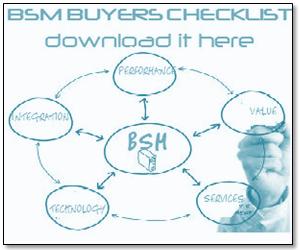 In a recent blog post called IT Cost Transparency = Power to the people on the bmcsoftware blog, Tony Narvarrete wrote that when your users don’t understand IT costs, they can take them for granted. That means they probably think of them as free and as such, they don’t really care about consumption. Yet his title seemed to suggest that the advantage of knowing this cost rested with the users when it’s actually advantageous to both IT and users when service costs are laid out in a clear way.
In a recent blog post called IT Cost Transparency = Power to the people on the bmcsoftware blog, Tony Narvarrete wrote that when your users don’t understand IT costs, they can take them for granted. That means they probably think of them as free and as such, they don’t really care about consumption. Yet his title seemed to suggest that the advantage of knowing this cost rested with the users when it’s actually advantageous to both IT and users when service costs are laid out in a clear way.
A couple of years ago before there was a lot of talk about private clouds, I learned about a Defense Information Systems Agency (DISA) initiative that provided a way for teams to set up and break down projects very quickly while in the field. The spokesperson explained they set up a portal with a series of tightly defined service offerings, and that individual projects were charged based on the services they used and for how long. That meant, users only kept a project open for as long as they needed and no more.
Even if you’ve established a services approach at your company, if you haven’t set up a cost structure for your users, there is no basis for them to understand cost and consumption. If I’m in a situation like the DISA service portal, I know if I’m using a certain number of software licenses, a certain amount of hard drive space and so much memory and it’s going to cost me x dollars for x days, I’m going to make darn sure, it gets shut off the day I don’t need it anymore.
On the other hand, if I don’t know how much these services cost, it’s not going to matter to me how many resources I’m using, and I’m probably not going to think to give those resources back when I’m done. It’s one of the reasons that companies have thousands of SharePoint sites sitting around on the company servers — because there is nothing compelling project owners to shut them down, even long after the project is over.
But when you tell your customer-users exactly what it’s costing them to use your services, you can plan your resource requirements better because chances are you won’t have so many of these orphaned projects sucking resources. It’s better for IT pros because you can make better use of existing IT resources, and it’s better for users because they can negotiate based on a firmer understanding of the costs of using a particular service.
When your users understand the relationship between cost and consumption, everybody wins.
Photo by Oran Viriyincy on Flickr. Used under the Creative Commons License.














